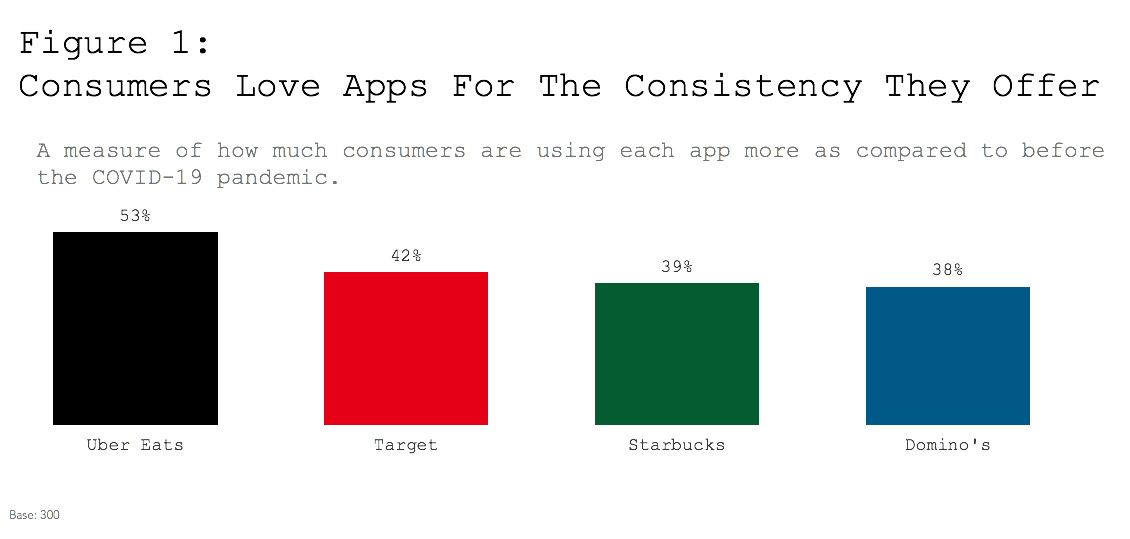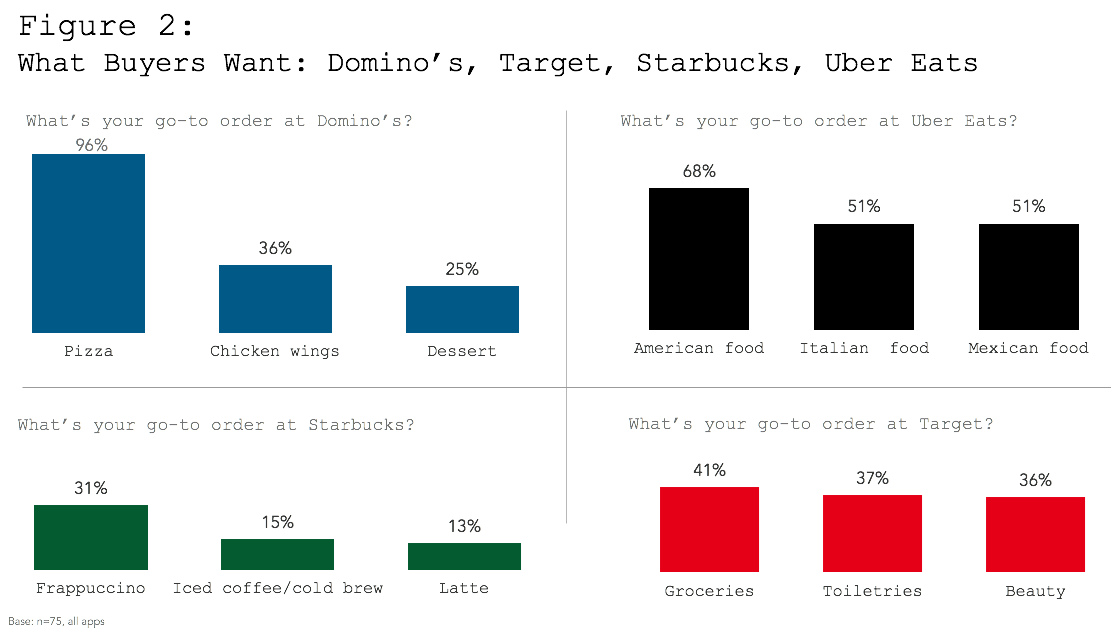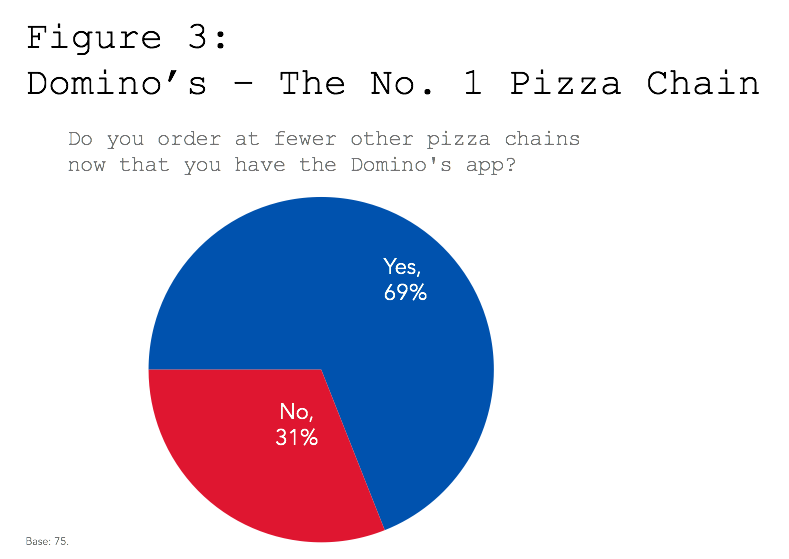Editor's note: Catherine Gutierrez is VP of marketing at Irvine, Calif.-based marketing research firm MFour Mobile Research.
You are stuck at the tail end of a crazy crisis called COVID, trying to figure out your next research step. Last year, consumer behavior veered so far off “normal,” you’re still reeling from the effects.
Look down.
The right path is likely in the palm of your hand … literally. When everything changed last year, the secret to beating the odds shifted. Today, many believe revenue streams of the future will be found via mobile apps.
Consumers love apps – they’re easy! So easy, in fact, that apps have reshaped our industry. You have a choice – start doing app research or get left behind.
But how do you get started? Our team dug into Domino’s, Starbucks, Target and Uber Eats to see why these apps are so successful.
1. App use is up.
Consumers crave control. They love owning how, where and when they spend. Now, put your buyers in a pressure-cooker pandemic, remove the control the felt they had from almost all aspects of their lives and it’s pretty easy to see why apps act as a dopamine hit to their systems.

It’s also why 53% are using the Uber Eats app more than before the pandemic. Target (42%), Starbucks (39%) and Domino’s (38%) apps also saw use increase during the pandemic. And, just like that, a great app experience became essential.
Apps are gooier than a paint brush dipped in superglue. They’re so sticky that buyers don’t even realize they’re creating habits. It’s probably why 57% of Domino’s app users say it’s more important to order on the app than in a store or over the phone – and why 92% use the app for nearly every order.
But what about apps outside of the pizza realm?
Starbucks (37%), Target (29%) and Uber Eats (39%) app users all find it more important to order on the app than to go in person. And, just like Domino’s, they use the app for nearly every order.
2. Apps are valuable.
Consumers want the purchasing process to be easier, more fun or less expensive for them. When brands find a way to do that in an app, consumers are hooked.
Figure 2 shares a little taste of what they’re ordering.

When you look at the data, you see it’s all about control.
Each app creates value by giving over some of the control directly to the consumer. Then, brands can build on that relationship to provide more of what consumers crave.
The top reasons to order on each app, are:
- Domino’s is easy (72%).
- Starbucks is custom (68%).
- Uber Eats has options (66%).
- Target has lots of coupons (59%).
It’s simple. These apps use research to find out what buyers want, and then deliver it.
Create a great customer experience, and 86% will pay more for it. Which is probably why buyers are so loyal to these four apps.
3. Apps equal customer loyalty.
True love takes time. And dedication.
If you brand is willing to put in the effort, you can really kill off your competition.
Look at Domino’s. They have the most loyalty out of the four apps we studied, and it’s the reason they’re decimating their competition. Domino’s is now the No. 1 pizza brand.

We asked all app users if they now visit fewer competitors because of their [Domino’s, Starbucks, Target or Uber Eats] app. For the majority, the answer was a clear yes. But, Domino’s users were way up there (Figure 3).
This is what loyalty looks like.
Loyalty matters because it’s the real reason you need to come up with a great app strategy. But there’s more. This loyalty is lasting.
We looked into buyers’ future behaviors as well. Across Starbucks (37%), Uber Eats (31%), Target (29%) and Domino’s (28%), everyone expects to order more on apps in the next six months. App ordering isn’t a craze, it’s a wave.
Take a page out of Domino’s book. They describe themselves as a “technology company” that happens to sell pizzas. Now, that’s a great way to survive and thrive in the face of adversity.
A new direction
Buyers’ digital footprints are larger than ever. Sixty-one percent of people now shop online more than 30% of the time. Researchers can use this data to learn more about:
- Product findability.
- E-commerce satisfaction.
- Selection criteria and journey.
- User interface and experience feedback.
- Changes in usage behaviors, patterns and frequency.
Conducting shopper research is your chance to reach consumers directly, while your app or site is fresh in their mind.
If you’ve been looking for a new direction for a while, this is it. Take a deep breath, hold on tight and let the data be your guide.
